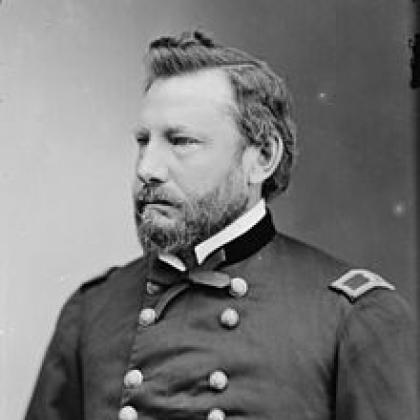Built on a Foundation of Open Communication
AFCEA’s founders, a group of communicators led by David Sarnoff, experienced firsthand how open dialogue and strong relationships between government and industry in times of peace can help ensure effective communications during times of war. Sarnoff, who became president of RCA, had served as a brigadier general in World War II.
In 1946, AFCEA was formed from the U.S. Veterans Signal Association and the American Signal Corps Association to promote communication, dialogue, and open and ethical exchanges of information between the public and private sectors. As the association’s outreach has broadened, this goal remains the pillar of AFCEA International.
The History of AFCEA International
Following the American Civil War, the U.S. Veterans Signal Association evolved from the original Signal Corps, which was established under Maj. Albert James Myer of the U.S. Army. Maj. Myer developed the wig-wag system of signaling and is known as the father of both the U.S. Army Signal Corps and the U.S. Weather Bureau.

The U.S. Veterans Signal Association was active for many years, ultimately being augmented by veterans from the Spanish American War and World War I.
Another World War I group, the American Signal Corps Association, merged with the U.S. Veterans Signal Association in 1918 and was active until 1944 (World War II).
In May 1946, Maj. Gen. Harry C. Ingles; Brig. Gen. David Sarnoff; a number of industrial leaders; Darryl F. Zanuck, a renowned 20th Century Fox movie producer who covered action in North Africa; and Fred Friendly, who became president of CBS News, founded the Army Signal Association, absorbing the remaining chapters of its predecessors. Sarnoff became president of RCA after he left service.

In 1947, with the unification of the services, the name was changed from the Army Signal Association to Armed Forces Communications Association, and in 1954 the name became the Armed Forces Communications and Electronics Association.
In 2018, to reflect the association's expanding mission to serve the global security community, the board of directors voted to change the name to AFCEA International.
AFCEA's first chapters in Europe were founded by U.S. forces associated with NATO, Combined and U.S. Headquarters in Paris in 1952, London in 1954, Naples in 1961, Belgium in 1968, Stuttgart in 1973, Kaiserslautern in 1976 and Worms in 1977.
U.S. corporate interest in the late 1970s led to the establishment in 1981 of the Brussels Symposia, which had begun as a chapter activity in 1979. This event expanded to become an exhibition primarily serving NATO C3 infrastructure improvements. The creation of an office in Brussels followed in 1982.
AFCEA International now has chapters across the globe.
AFCEA continues to build on the vision of its founders to connect great ideas with innovative people to produce vital solutions for global security.